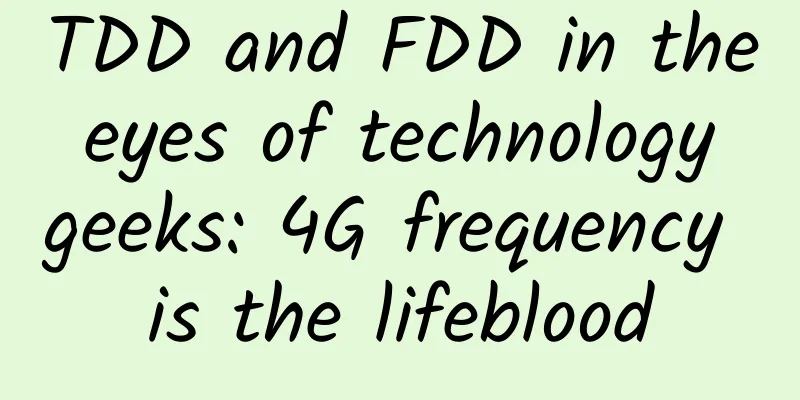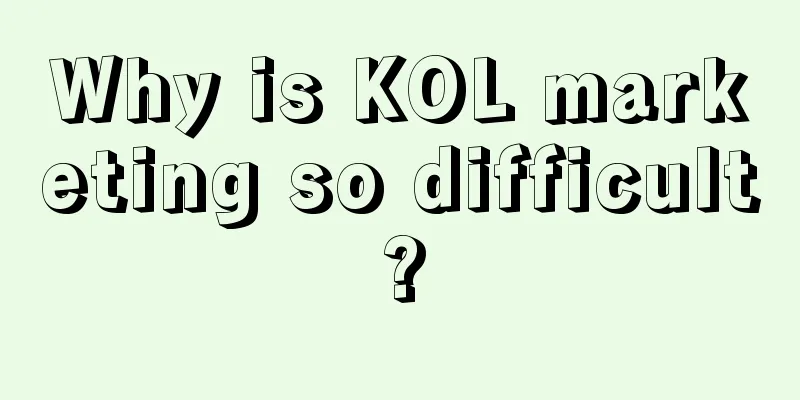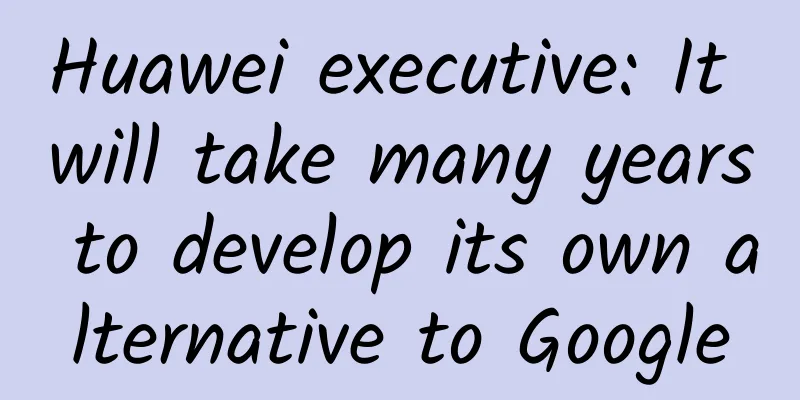TDD and FDD in the eyes of technology geeks: 4G frequency is the lifeblood

|
In 4G, the proportion of shared technologies between TDD and FDD reached 90%. From a technical perspective, they are exactly the same in the following six aspects: they all use OFDM multiple access, Turbo code encoding, support up to 350KM/h mobility, support VoLTE voice solution, all-IP system architecture, and support flexible configuration of channel bandwidth from 1.4M to 20M. In fact, as a user, you don't need to care about these seemingly mysterious technical languages. Not to mention that they are all the same, even if there are different subtle differences, as long as they don't affect our experience, you don't need to care. For example, people often say that FDD requires paired frequencies and has high frequency requirements, so it is not as good as TDD. Having said that, what does the frequency have to do with us ordinary people? As long as the country is willing to allocate frequencies to operators, as long as the frequency of FDD is sufficient, whether the requirements are high or not, it really has nothing to do with us ordinary people. Unless the frequency bandwidth allocated to FDD is not wide enough, when the number of users reaches a certain scale, when the operator wants to serve more users on this frequency, it will cause a decline in experience, and the direct result may be a decline in network speed. This is like a highway. If the maximum traffic flow exceeds the limit, everyone will be stuck on the highway. Think about the tragedy of free highways during holidays, and I think everyone will understand. But which highway will be wider in the future? You just need to remember two numbers: the frequency bandwidth of TDD is 190M, and that of FDD is 120M. For operators, frequency is crucial, and the same is true for a standard! This is why Europe has allocated the best frequency to its FDD, and why the Ministry of Industry and Information Technology has strongly allocated the best and most frequencies to TDD in China. Let's not talk about the different service experience. FDD and TDD have their own advantages and disadvantages. Let's look at the support of application scenarios. Some people often say that the TDD system is better than the FDD system. In the end, it's nothing more than being able to use fragmented frequencies (note: it is becoming increasingly difficult to find complete, unoccupied frequencies in the world, and operators can only find frequencies wherever they can), or having high frequency utilization. The advantage of TDD over FDD is that it supports asymmetric services more flexibly than FDD. What is an asymmetric service? Most Internet services are asymmetric services. Voice service is a symmetrical service. Symmetry means that the amount of data in the uplink and downlink of your terminal is the same. When watching videos, reading news, map navigation, and playing games on your mobile phone, we need a lot of data from the Internet. At this time, the TDD system has an advantage because it allocates uplink and downlink channels according to time slices. It can flexibly configure uplink and downlink channels according to needs, just by changing the allocation ratio of time slices. However, TDD is not without disadvantages. It is a system with strict time synchronization and is more sensitive to the Doppler effect. Therefore, when the speed is too fast, it is not as good as FDD. For example, ITU requires the mobile speed of TDD system to reach 120km/h, while the mobile speed of FDD system is required to reach 500km/h. This is mainly because FDD is a continuous control system and TDD is a time-division control system. When moving at high speed, the Doppler effect will cause fast fading. The higher the speed, the higher the fading change frequency and the deeper the fading depth. In other words, if covering high-speed rail, using FDD coverage is a better choice, and the user experience will be better than TDD coverage. Of course, this is when the distribution intervals of FDD and TDD base stations are the same. Don't talk about who is the spring of whom. Without base station sites and network coverage, everything is empty. In fact, simply comparing FDD and TDD, or hybrid networking, is meaningless. Which of the three operators can give users a better experience still depends on network resources. The most important thing is who can provide better coverage, faster, more, and more economical. To put it bluntly, whoever has more existing base stations will have an advantage. First, the network can be upgraded on the existing base stations for rapid coverage; second, it shortens the cycle of base station site selection. Now that property management is so awesome, of course, whoever has more existing sites can cover faster. TDD and FDD are both high-frequency, which requires the same network quality and the number of base stations of operators must be close in scale. Whether you are TDD, FDD, or hybrid networking, without base station resources, it is impossible to have fast, good, and economical network coverage. Any technology or hybrid will become empty. Don't talk about cheap tariffs anymore. Having terminals is not a hooligan. Some people say that there are thousands of FDD terminals in the world, and only a few hundred terminals that support TDD. There are all kinds of claims, such as the industry is mature and the terminal cost is low. These people have forgotten that, technically speaking, there are actually only a few terminals that meet the multi-mode requirements of China Telecom and China Unicom. There are many foreign terminals, but they cannot be connected to the network openly and cannot be included in the contract phone plan openly because they do not meet the technical requirements of TDD and FDD hybrid networking. Of course, the tariff is also a selling point of the three major operators, but there is actually nothing to say about this. One is cheaper than the other. Yours is 48, mine is 49. You have a free combination of packages, and I have a unified package. No matter how fancy the tariff is, your phone is still a 3G phone. How can users feel? As a winner of Toutiao's Qingyun Plan and Baijiahao's Bai+ Plan, the 2019 Baidu Digital Author of the Year, the Baijiahao's Most Popular Author in the Technology Field, the 2019 Sogou Technology and Culture Author, and the 2021 Baijiahao Quarterly Influential Creator, he has won many awards, including the 2013 Sohu Best Industry Media Person, the 2015 China New Media Entrepreneurship Competition Beijing Third Place, the 2015 Guangmang Experience Award, the 2015 China New Media Entrepreneurship Competition Finals Third Place, and the 2018 Baidu Dynamic Annual Powerful Celebrity. |
<<: CCTV vs. Apple: How to define online privacy?
>>: What is a deeply customized operating system?
Recommend
Is it best not to come into contact with patients who have undergone chemotherapy? Can chemotherapy drugs be transmitted to people around you?
Rumor: "It is best not to contact patients w...
How much energy does the fission of 1 gram of uranium produce? Why is the energy so high?
The fission of uranium is a physical reaction, wh...
German Chancellor changes his phone: America, are you still eavesdropping?
The new mobile phone used by German Chancellor Ang...
3-point optimization of the information flow landing page instantly increased conversion by 136%!
Conversion is the core of the entire promotion pr...
The secrets of the No.1 public and private domain traffic gameplay in the category revealed!
In the era of inventory, merchant brands should t...
Why guard statements should be avoided in Swift
Since the guard statement appeared in Swift, it h...
Kuaishou short video advertising platform gameplay + case introduction!
Kuaishou is a well-known short video application ...
Why do many girls have a brown vertical line on their stomachs?
Reviewer of this article: Zhou Xiaobo, Doctor of ...
How to evaluate, monitor and promote KOL marketing channel conversion?
With the rapid development of the Internet , we h...
Glasses also have a “shelf life”, so be sure not to let them expire!
Do glasses have a shelf life? On the surface, gla...
CATL's profit margins are declining, automakers are in arrears, and its financial situation is deteriorating
Previously, CATL benefited from generous policy s...
Tips for placing massive information flow ads!
Massive information flow is the first tier of the...
QQ Groups to be closed? Tencent is furious
Dear users, due to business adjustments, our comp...
Large and medium-sized 4K TVs become standard, and market share increases dramatically
Since the beginning of this year, the domestic co...
The latest reminder from China CDC: This virus is highly contagious due to airborne and contact transmission, and is currently at its peak!
Recently, the WeChat official account of the Chin...









